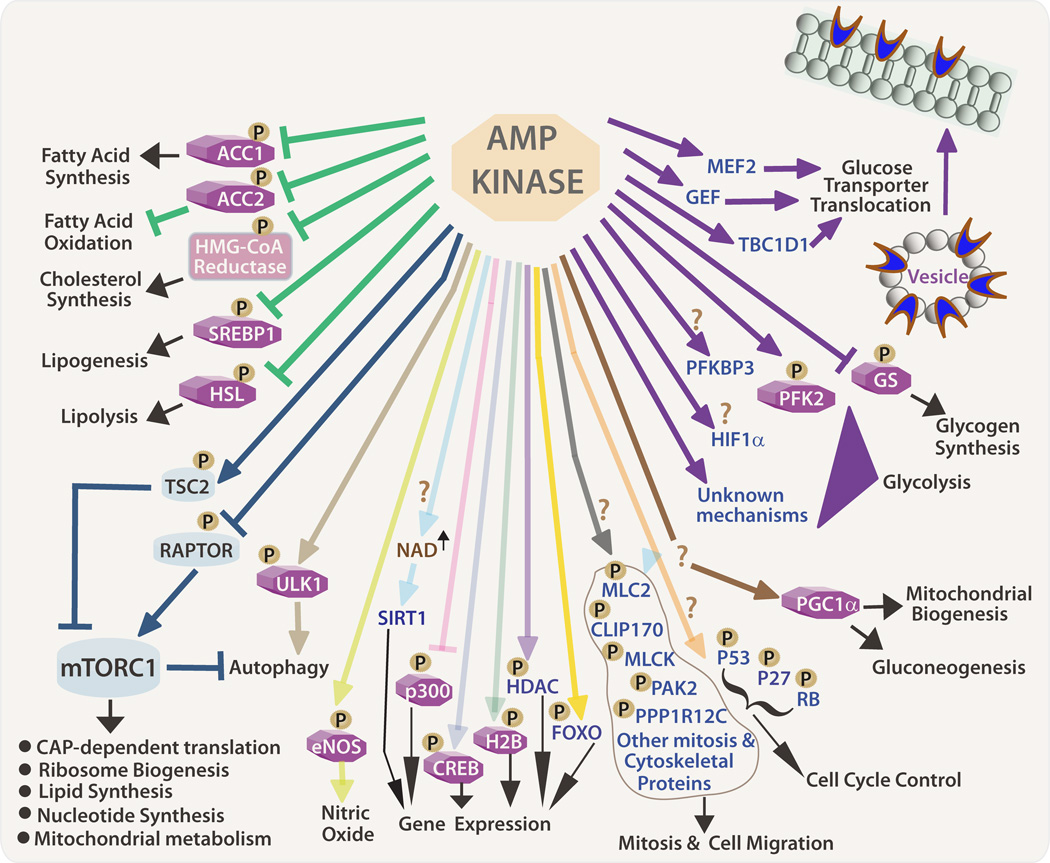Figure 2. AMPK Downstream Targets.
AMPK directly or indirectly phosphorylates multiple substrates to increase glucose transporter translocation from cytoplasmic vesicles to plasma membrane and promote glycolysis. Through inhibitory phosphorylation, AMPK is a negative regulator of lipogenesis (green lines) and inhibits mTORC1 by phosphorylating (activating) TSC2 or inhibiting RAPTOR, the mTORC1 binding partner. Both mTOR and AMPK phosphorylates ULK1 at different sites to inhibit and activate autophagy, respectively. The question marks indicate substrates/pathways that require independent validation and further investigation. ACC: Acetyl-CoA carboxylase; HMG-CoA: 3-hydroxy-3-methylglutaryl CoA; SREBP1: Sterol regulatory element-binding protein 1; HSL: Hormone sensitive lipase; TSC2: Tuberous Sclerosis Complex 2; ULK1: Unc-51-like kinase 1; eNOS: endothelial nitric oxide synthase; CREB: cAMP response element-binding protein; H2B: Histone 2B; MLC2: Myosin light chain 2; CLIP170: Cytoplasmic linker protein 170; MLCK: Non-myosin light chain kinase; PAK2: p21-activated kinase 2; PPP1R12C: Protein phosphatase 1, regulatory subunit 12C; RB: Retinoblastoma; PGC1α: Peroxisome proliferator-activated receptor gamma coactivator 1-α; HIF1α: Hypoxia-inducible factor 1α; PFK2: Phosphofructokinase 2; PFKBP3: 6-Phospho-2-kinase/fructose-2–6 bisphosphatase; GS: Glycogen synthase; TBC1D1: Tre-2/USP6, BUB2, cdc16 domain family member 1; MEF2: Myocyte enhancer factor 2; GEF: GLUT4 enhancer factor.

